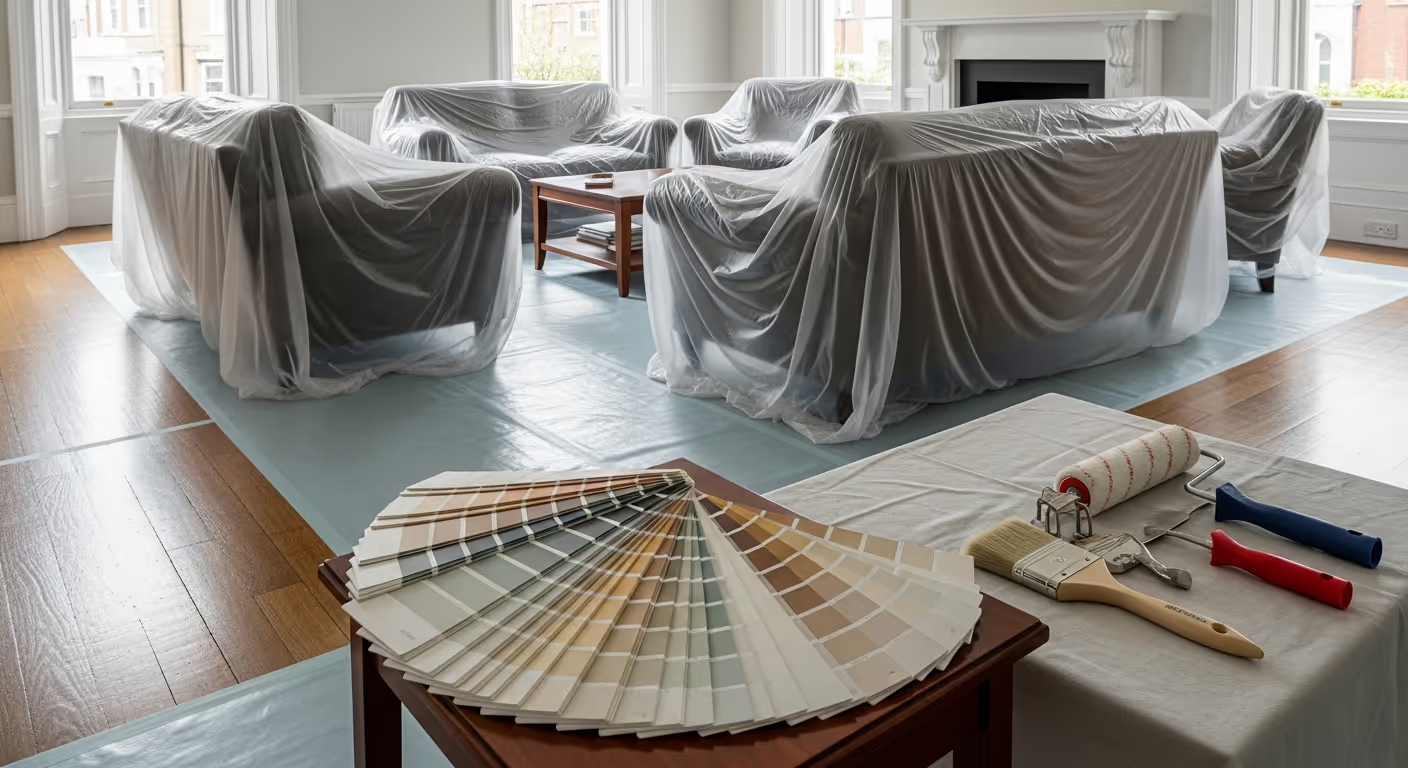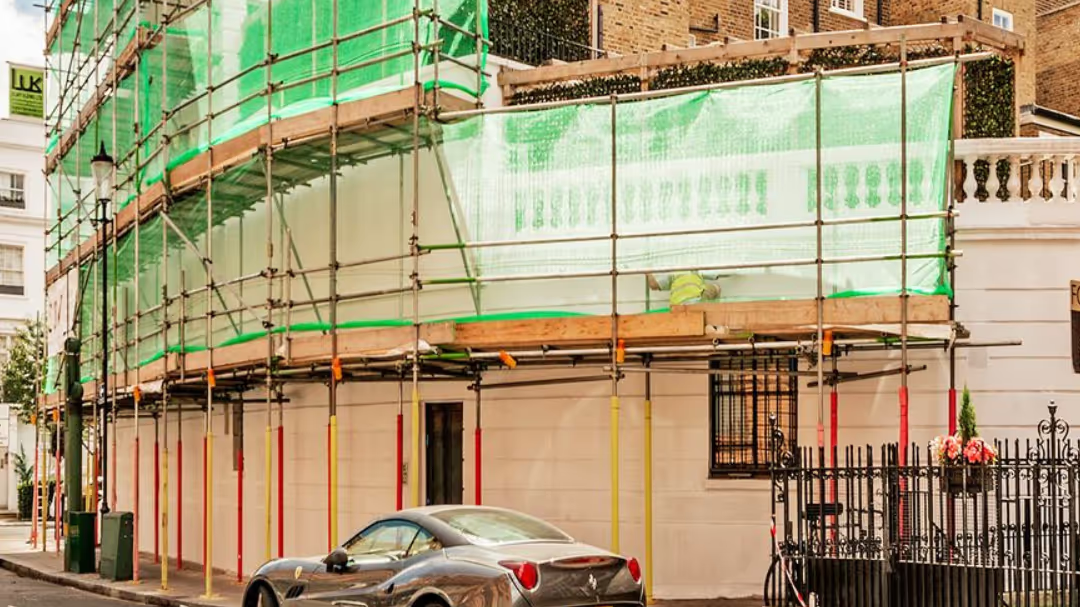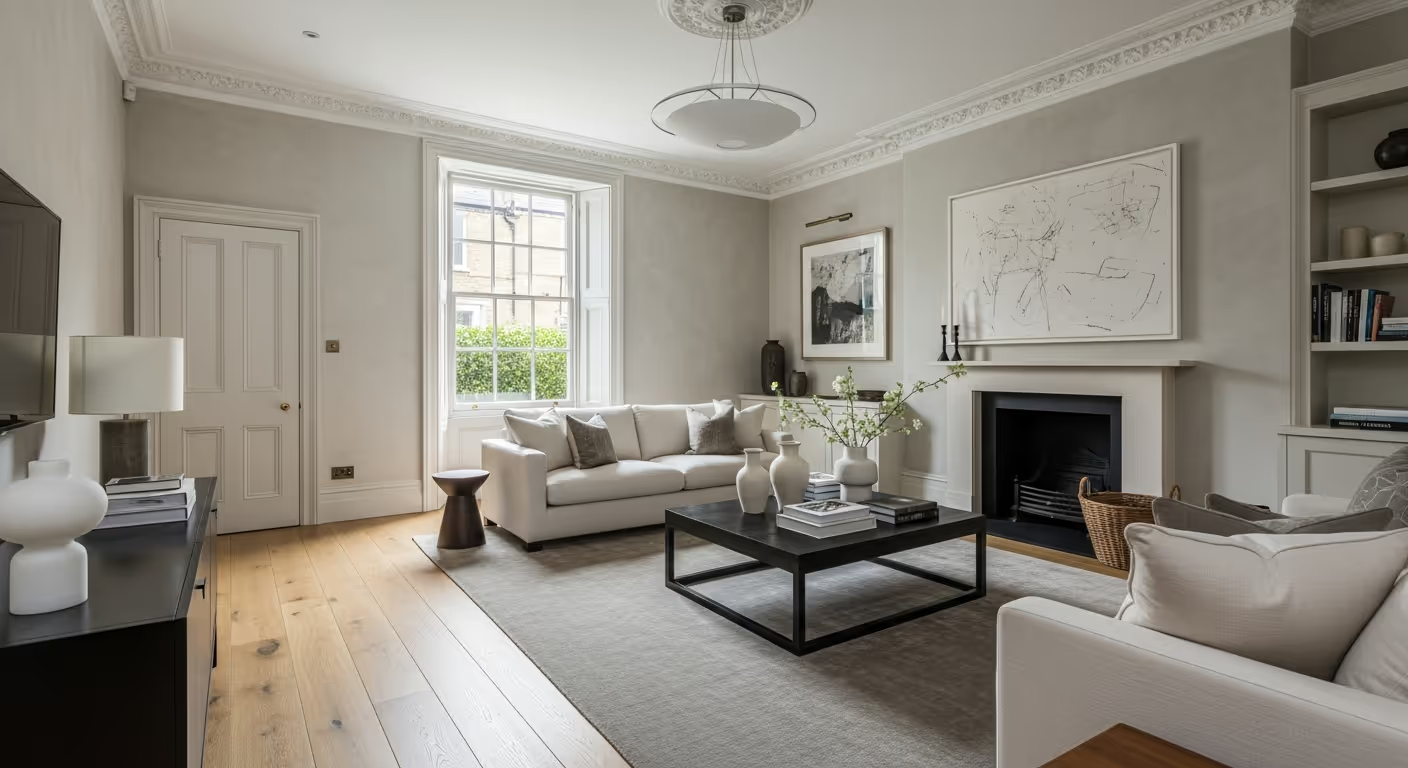
Want a clear view of interior repaint costs in Kensington and Chelsea. This guide explains the real drivers, how to plan a tidy scope, and simple steps that keep quality high and wasted spend low.

Short answer: Interior repaint cost in Kensington and Chelsea is set by five main factors. These are room size and access, the amount of repair and prep, colour and sheen choices, the scope for woodwork and details, and the site plan with protection and daily clean downs. Share photos, a room list, and your finish goals. We can turn these into a clear written plan that fits your home. For room by room ideas, see our interior painting and decorating page.
High end homes in Kensington and Chelsea deserve a calm repaint that looks good and lasts. You do not need guesswork. Once you know what drives cost, you can set the right scope, keep the finish level steady across rooms, and avoid changes during the work. This guide explains each factor in plain language and shows small choices that make a real difference to time and budget while keeping standards high.
Room size is the simple starting point. More wall and ceiling area takes more time and more paint. Tall ceilings and long corridors add ladder moves and careful edge work. Access matters too. Empty rooms are faster. Lived in rooms add time for daily protection and pack down so the space stays usable. If you have built in joinery, window seats, or many doors, the painter will spend more time on edges and reveals. Good access and a clear plan keep the pace steady and the lines clean.
How to help with access. Clear small items, box books and ornaments, and label art for where it returns. Agree a room sequence so one space stays live while another is in progress. If you work from home, choose a base room. We will set the schedule to protect that space and keep noise and dust away when you need quiet time.
Prep is the base of a good finish. Small cracks, old fixings, and light dents add up. Filling, sanding, priming, and stain blocking all take time. A wall with many repairs can take longer than the painting itself. If stain marks are present from old leaks, these need a blocker so they do not bleed through fresh coats. Good prep is money well spent. It stops early failures and keeps the look calm in side light.
What raises prep time. Heavy wear near doorways, cracked plaster in old lath areas, many picture hook holes, and glossy trim that needs a firm sand. Kitchens and hallways often need more stain block and tougher finishes. Bedrooms and reception rooms may need fewer heavy repairs but demand finer sanding for a smooth look under soft lamps and daylight.
Colour change affects both paint and time. A move from very dark to very light can need extra coats. A strong new tone can also need a primer for a true colour read. Sheen level changes the work as well. Higher sheen shows minor flaws and needs finer prep. Durable matte hides small movement and suits most walls. Eggshell or satin on woodwork gives a soft, clean line that is easy to maintain. When walls and trim are well planned, rooms feel quiet and balanced.
How to test colours without waste. Ask for sample panels on real walls, not just cards. Check them in morning light and in the evening. Place samples near cornices and skirting to see the way edges read. If your home uses Bauwerk limewash in some rooms, pick a paint tone for other rooms from the same family so the whole home feels consistent.
Doors, skirting, architraves, window frames, shutters, and wardrobes add steady hours. Each piece has edges, panels, and profiles that need clean sanding and careful coats. Older joinery can look wonderful once painted, yet it takes patient work to reach a smooth touch and a crisp line. If you have panelled doors, period cornices, and fitted wardrobes, plan for the extra time. This is where a premium repaint really shows its value, since clean edges make a room feel settled and refined.
Where detail saves money later. Smooth, well painted woodwork is easy to keep. It wipes clean without constant touch ups. A rushed trim job chips fast. If you want value over many years, put time into the base work on doors and frames now. The cost is in the careful prep and the cure time. The reward is a finish that stays calm and smart under daily use.
Protection and a tidy site do more than keep floors safe. They save time and stress. Clean sheets on floors, masked edges, and wrapped furniture allow focused work and reduce snags. Daily clean downs mean you can live at home during the project with less disruption. Where a building has a porter or shared areas, we set routes and times that keep neighbours happy. A quiet, orderly site leads to better work and fewer surprise costs.
What good protection looks like. Floors covered edge to edge, taped joins that do not lift, clean walkways, and dust control on sanding. Switch plates and light fittings come off where safe, or get masked cleanly. Handles and hinges are protected during trim coats. The result is a sharp finish without splatter or rough edges.
Scope is the list of what is in the job. Clear scope stops drift and keeps cost under control. Decide which rooms are in, which walls get colour changes, and how much joinery is included. If a room has heavy wear, plan a full reset, not just a quick coat. If a room is calm and only needs a refresh, we can plan a light sand and a single top coat where the base is sound. Honest scope choices are the best way to balance budget and finish level across the whole home.
Here is a simple plan we often use in Kensington and Chelsea for a lived in flat. Living room gets full prep and two coats on walls and ceilings, and two coats on woodwork. Kitchen gets stain block near the cook zone and a durable matte on walls. Bedrooms get careful sanding, two wall coats, and eggshell on trim. Hallway gets a scrub tough finish and extra time on door frames. Bathrooms get moisture aware paint where needed. This plan keeps quality even, puts attention where life is busy, and stays kind to budget.
Small steps before we start save time and protect your things. Move small items into boxes, clear surfaces, and label art that must go back in the same spot. If a room has delicate pieces, let us know so we can add extra protection. Share your building rules for hours and lifts. Tell us where we can park or unload for short spells. These notes help the team arrive with what they need and start the work without delay.
There is no single best paint for every room. Bedrooms and reception rooms look calm in a durable matte. Hallways need extra scrub resistance. Kitchens and children rooms need a surface that cleans well. Trim usually suits eggshell or satin. If you love a mineral look in some spaces, limewash is beautiful in quiet rooms while durable paint covers the busier spaces. The right mix keeps the home coherent and easy to live with.
Time depends on scope and access. A two bedroom flat with full rooms and trim often takes about seven to ten working days with a steady team. Add time for heavy repairs, complex colours, or extra joinery. Empty properties can move faster since set up and wrap down are simpler. We give a day by day plan before we begin so you know what happens when.
Most of our clients stay in place during the repaint. We set zones so you always have a live room. We manage sanding times and keep walkways clear at the end of each day. Windows are opened when safe for gentle airflow. If you have pets or small children, we set simple rules for room access. A clean, steady routine is the best way to keep the week stress free.
Spend on prep, edge work, and woodwork. These are the parts you see and touch every day. Save by keeping colours within a family so coats cover well, and by grouping rooms with similar finishes so the team can work in an efficient sequence. If a room is rarely used and already tidy, a light refresh may be fine. If a room is a show space, give it the full prep so it stands up to close view and side light.
Can we reduce cost by skipping ceilings? Yes if ceilings are clean and even. Many clients refresh walls and trim now and plan ceilings later. We will advise after a site check.
Will a bold colour cost more? Bold colours can need extra coats for depth, which adds time. We test first to set the right plan.
Is weekend work possible? In some buildings yes. It depends on building rules and noise limits. We can plan quieter tasks for those days if needed.
Can I keep one room free for work calls? Yes. We set a sequence that keeps one room quiet at agreed hours.
If you are still weighing options, read our guide to Bauwerk limewash for soft, natural walls in calm rooms. For wallcovering ideas that add depth, see the post on fabric wallcoverings. You can view the quality level we aim for in the Central London residence project and other recent projects.
Send photos of each room, a simple list of walls and ceilings, and a note about trim. Tell us any colour changes you want, and whether you plan to keep the home live during the work. With this, we can write a fixed plan. The plan will include surface prep, primer choices, coat counts, and a clean daily routine. If you prefer a visit first, you can request a site visit and we will schedule a time that suits you.
.avif)
We work across Prime Central London with many projects in Kensington, Chelsea, Belgravia, Notting Hill, Knightsbridge, and Westminster. If you want a calm, high quality repaint that respects your home and your time, we can help with a simple, well planned scope that fits your goals.
Ready to plan your interior repaint? Share photos and a short brief. We will reply with a clear scope, a schedule that respects your life, and a finish level that looks right in your light. Start here and send us a message today.



You can also complete the form to send us a message, or call us on (0203) 5810807